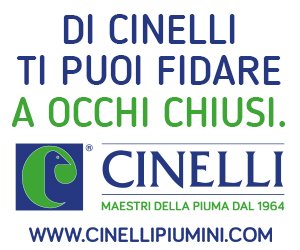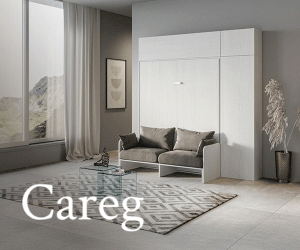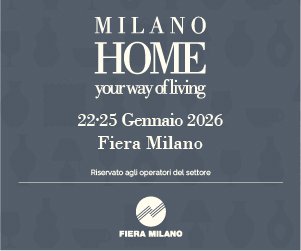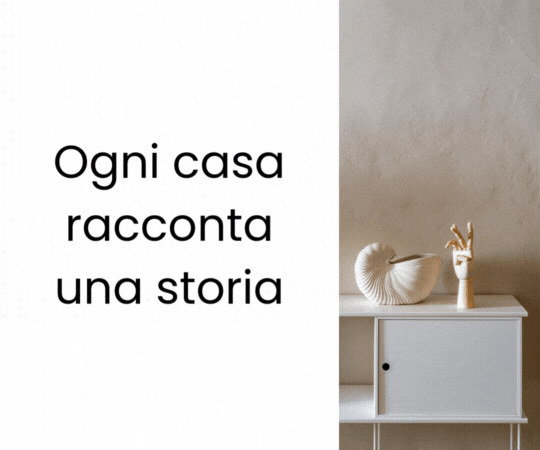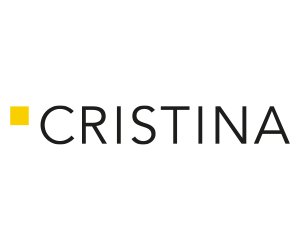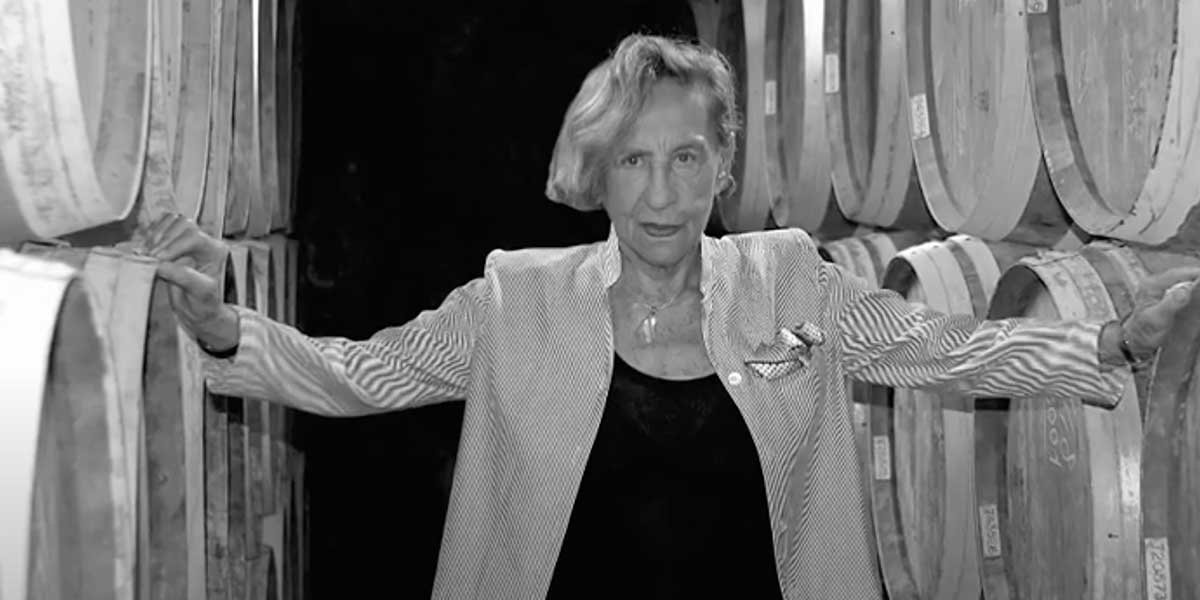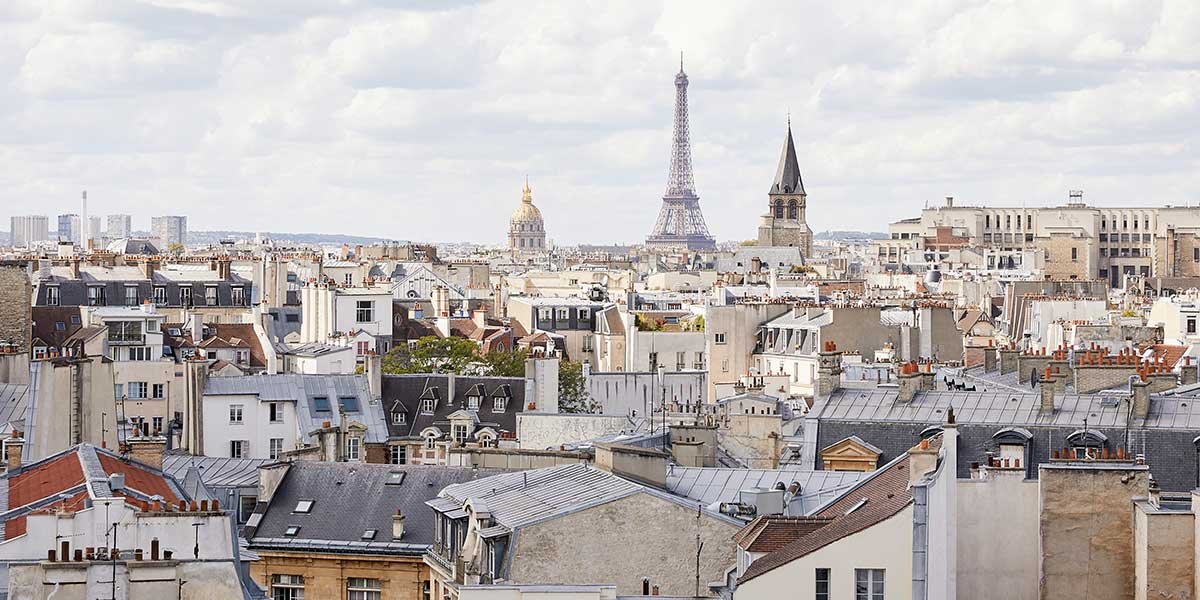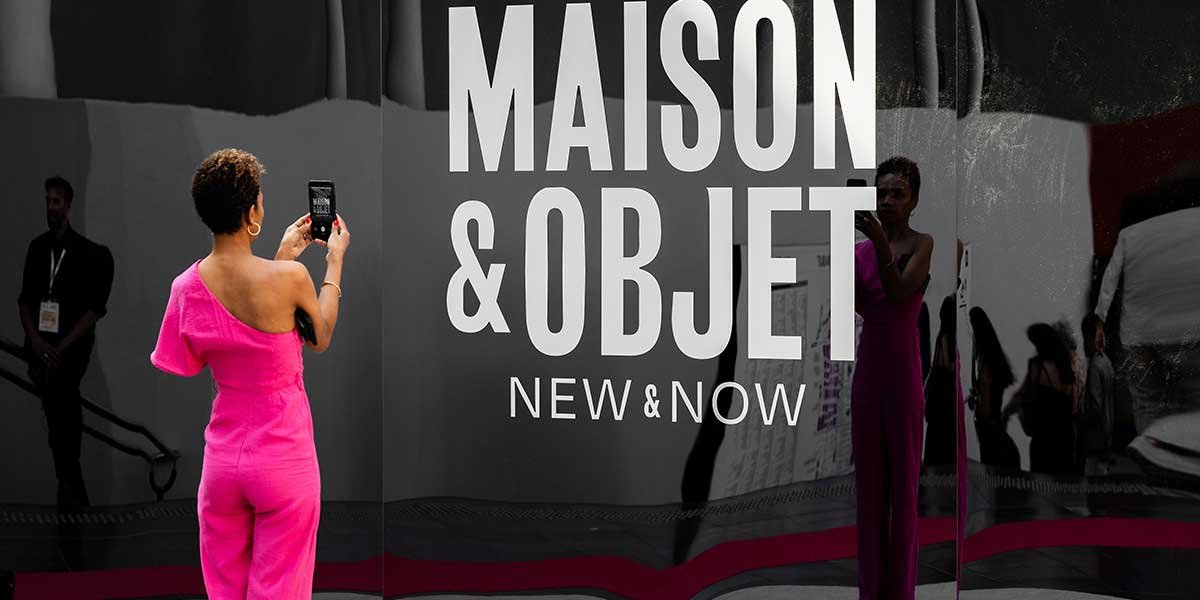by Evi Mibelli.
“You surround yourself with the things that are important to you. Your space, your things: this is who you are”
This phrase was displayed on one of the walls of the exhibition dedicated to Konstatin Grcic, which took place in 2015 at the Vitra Design Museum in Weil am Rhein. Born on May 18, 1965 in Munich, his professional background is studded with successes, international recognitions, awards, and exhibitions dedicated to him.
Interior of the autobiographical exhibition “Panorama” at the Vitra Design Museum in Weil am Rhein (2015). Photo Vitra Design Museum Archive

One of Grcic’s peculiarities is his ability to translating a complex reality like the contemporary one into objects – and systems of objects – capable of integrating with human gestures and their common life needs. In short, making everyday life flow by combining the useful with the beautiful and the pleasant. Humanism and technology.
In truth, our contemporary world is decidedly chaotic, overloaded with stimuli, and highly contradictory. Especially considering how the epochal change we are witnessing is seeing the coexistence of a development model in the process of being abandoned with a completely new one, fluid and constantly evolving.
Citizen armchair, produced by Vitra, 2020. Citizen reinterprets the classic lounge chair in an unconventional way. The structure and shape are defined by a bent tubular steel frame, while a seat cushion is freely suspended.

Yet Konstantin Grcic holds firm to one point: “I want to understand how design is connected to life.” This concreteness, which traces back to human gestures, is the key that makes his ideas tangible, also because, until proven otherwise, our bodies and our senses seek physicality, even while recognizing the pervasiveness of the virtual world.Digital technologies are opportunities that can simplify our lives. What must be underlined is that these formidable tools will never be able to replace human creativity.”
Chair and Armchair, coll. Mingx, Driade, 2016. A reinterpretation of Ming Dynasty furniture, enhancing its structural logic and formal beauty. Made of tubular steel, with a seat frame in laser-cut and folded sheet metal to hold the entire chair together
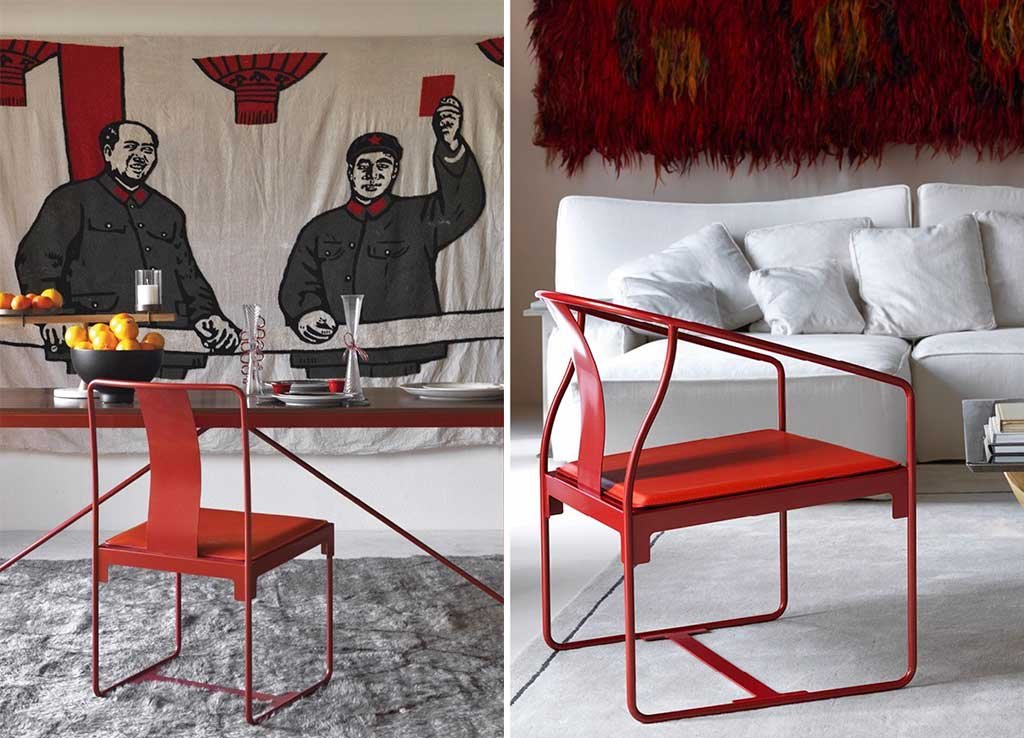
From an educational perspective, Konstantin Grcic followed a path reminiscent of that of a classic apprentice. At the age of twenty he moved to London and entered the cabinet-making workshop at the John Makepeace School. Meanwhile, he discovered Achille Castiglioni’s work while browsing the catalogue of an exhibition dedicated to the Italian master in Vienna. Those pages mark the watershed moment for understanding what he will do when he grows up: a designer.
Thus, from 1988 to 1990, he studied Industrial Design at the Royal College of Art in London, while also working with another rising star in international design: Jasper Morrison. At the age of 26, in 1991, he decided to embark on a solo career, opening the Konstantin Grcic Industrial Design studio (now in Berlin).
Softote bag by Verdeq, 2019. Verdeq produces bags from waste from convertible top production. An example of industrial material recovery where technical performance ensures durability and innovative aesthetic qualities to a commonly used object.
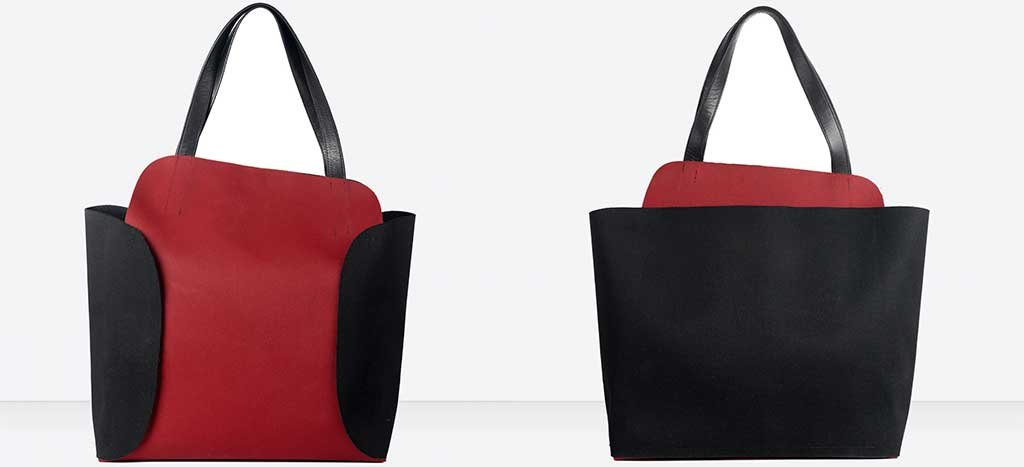
What stands out is the ‘Industrial Design’ of which Grcic feels he is a faithful interpreter. Although with some variations on the theme. The romantic idea of Industrial Design goes hand in hand with that of democratic design. In theory, and in any case thinking about a 20th century historical context, the concept has its own coherence. The fact is that our time is really different, it has changed radically.
The current flattening of production doesn’t democratize design; it makes it mostly sloppy. It practically erases it.It’s more honest to think of objects intended for a limited audience where design, technological, and creative research are combined with great attention to quality. If it then conquers a wider market, it means that it works beyond its original purpose.”
Val di Laufen washbasin collection, 2015. The basin sink is characterised by simple lines and extremely thin edges. The collection, made in SaphirKeramik, was awarded the IF Gold Award 2016
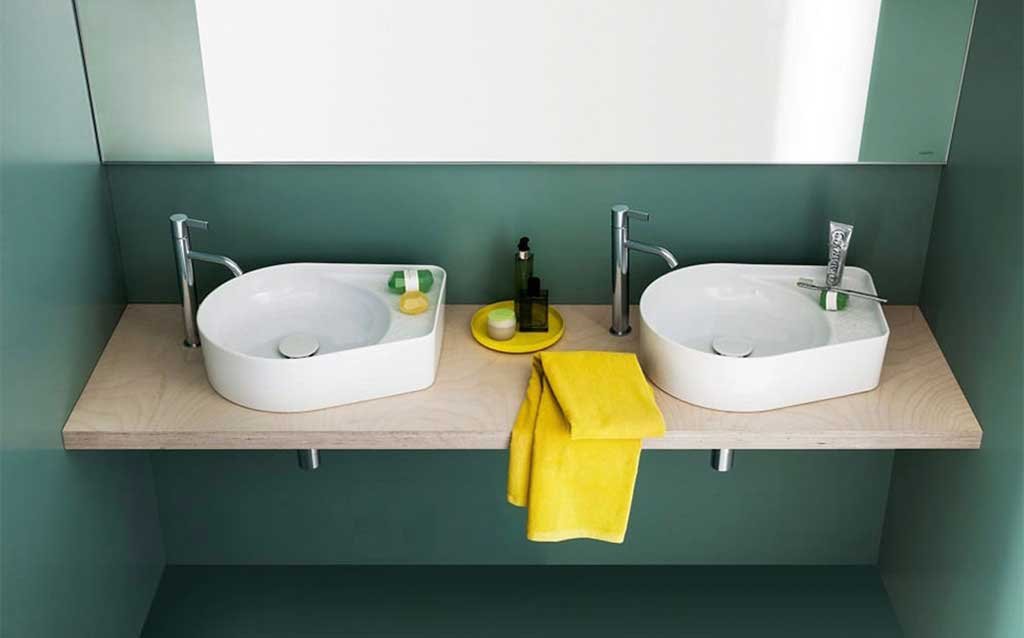
Cape removable cover sofa by Established & Sons, 2011. An example of a simple padded piece of furniture whose customization is achieved by simply changing the covering, almost as if it were a large blanket.

His approach to design projects cannot help but relate to industry, materials, technology and the environment. They are fundamental parts of it. And many of his pieces designed for the most important companies in the sector demonstrate this. From Magis to Flos, from Plank to Moroso, from Artek to Cappellini. A list impossible to quote in its entirety.
The Chair One chair by Magis, 2004. A true design icon, it has legs in aluminium profile and a seat in die-cast aluminium painted in polyester in various colours. Reported at the XXth Compasso d’Oro ADI, 2004
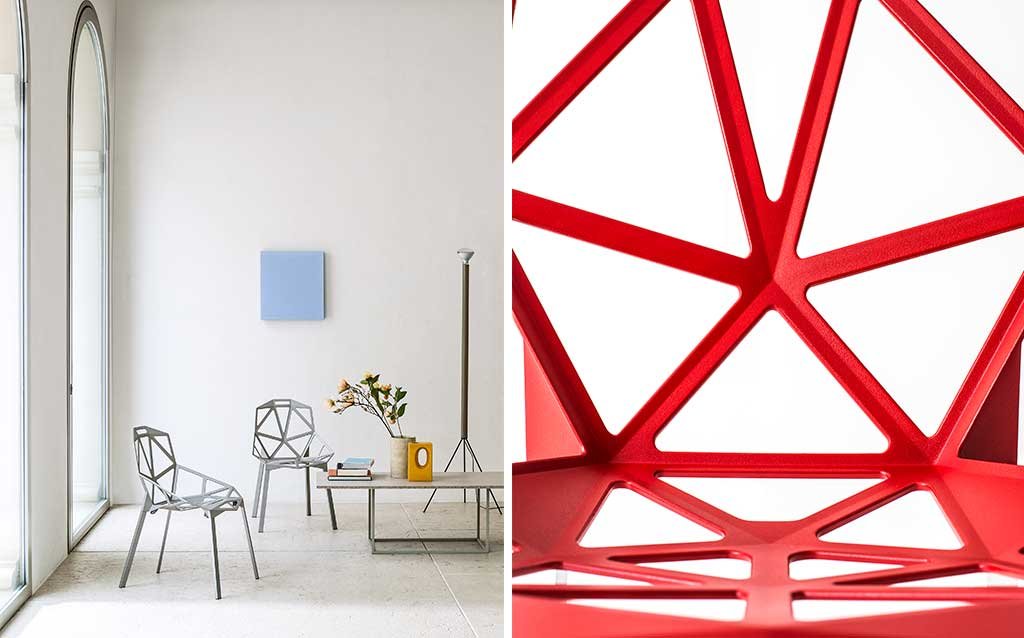
“My design needs to meet specific constraints. Relationships with companies are vital to my work. It goes beyond the simple business and marketing factor. It becomes a ground for exchange, even conflict, mediation and the search for solutions. This type of approach to the project requires great rigor, precision and strong motivation in order to achieve a meeting between mutual needs.” – Konstantin Grcic.
Much has changed over the years in the world of design. Opportunities have increased and work tools have improved, but the market has adapted, accelerating its ‘replacement’. There is a real risk that creativity itself will suffer. Promoting homologation. Has the time come to proceed at a slower pace?
Left, MayDay lamp by Flos, 1999. Reissued for the 20th anniversary in 2019 in a limited series. Mayday is a multipurpose lamp with a conical diffuser made of polypropylene and equipped with a hook that functions as a handle and a cord reel. Awarded at the XIX Compasso d’Oro ADI, 2001. On the right, lamp coll. Noctambule by Flos, 2019, made of blown glass, composed of modules that connect to create ceiling and floor models. A sophisticated LED technology that lights the lamps is integrated invisibly into the joints between the modules
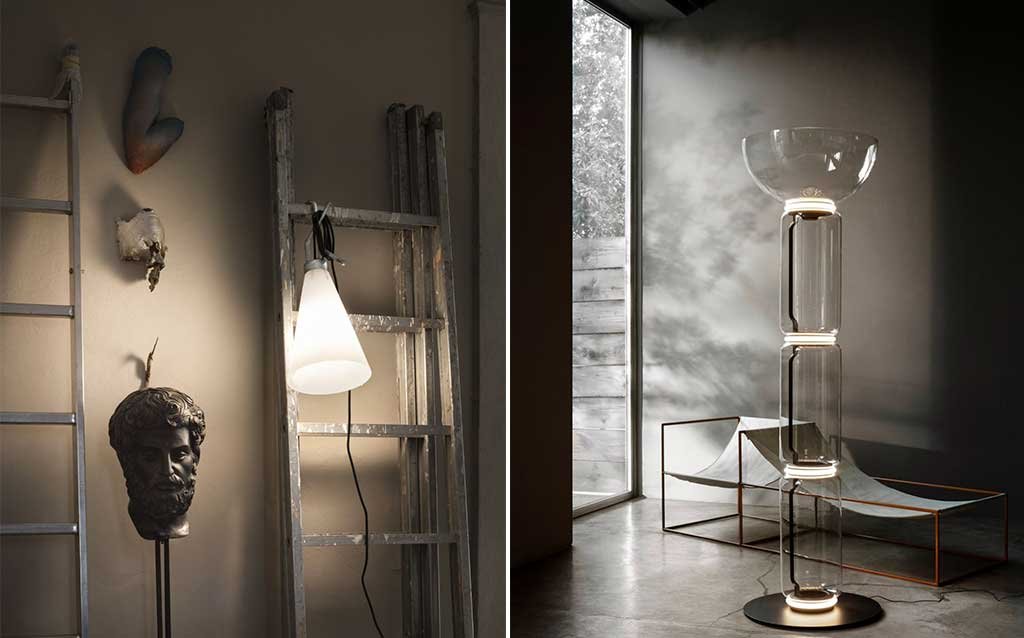
The answer, at least for Grcic, is yes. We need greater awareness of the reasons why something ‘is made‘ and ‘why‘ something is made. There is a further step forward. A persistent contemporary theme comes into play: environmental protection. The issue deserves much more than a commercial facelift. It is a methodological approach that involves the creative process from the early stages of product development.
Cup armchair by Plank, 2018. It is made up of two elements: a metal support structure and a very light and thin plastic body/shell, borrowed from the modern luggage industry. The result is a resistant, versatile and lightweight product suitable for multiple uses, from contract to home, as well as being recyclable.

“Projects must take everything into account: how to economize on the production process, the type of resources used, having clear information on the steps that determine the life of a product and its cycle, the recyclability of materials and, last but not least, the possibility that objects are repairable, something that is not at all a given in a context that until recently was only focused on consumption” – Konstantin Grcic
Bell, stackable monobloc chair in recycled polypropylene, by Magis, 2020.Bell, sedia monoblocco impilabile in polipropilene riciclato, di Magis, 2020. The material comes from industrial waste and can be 100% recycled after use. Sustainability extends to logistics with a specially designed pallet that can carry 24 chairs, reducing space and packaging.
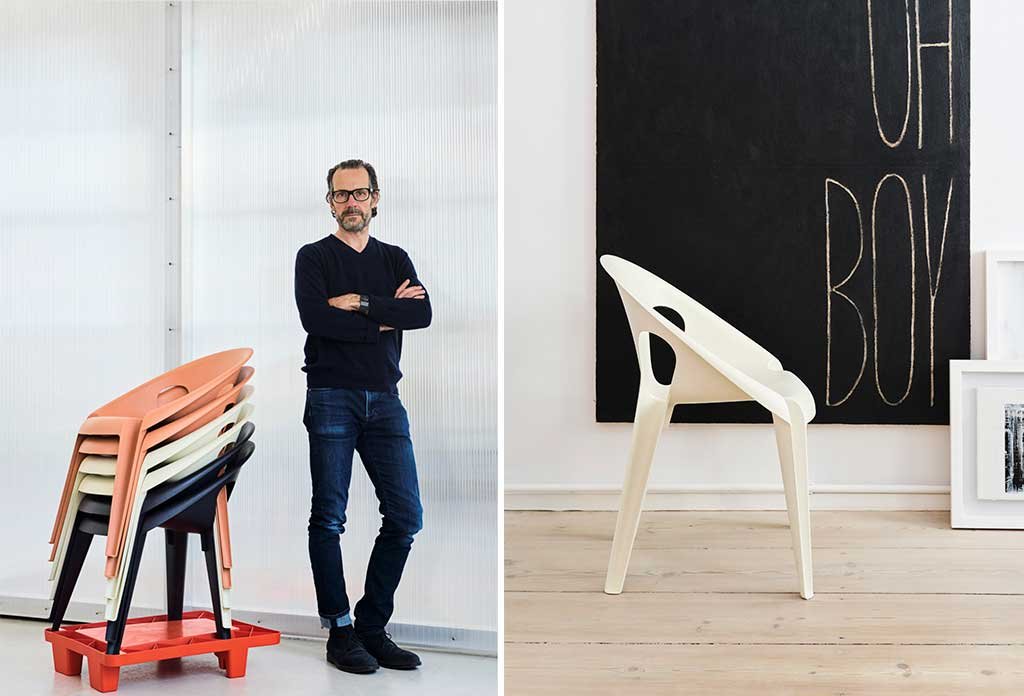
Konstantin Grcic – konstantin-grcic.com
In the cover image, a portrait of Konstantin Grcic (photo by Vitra Archive)




